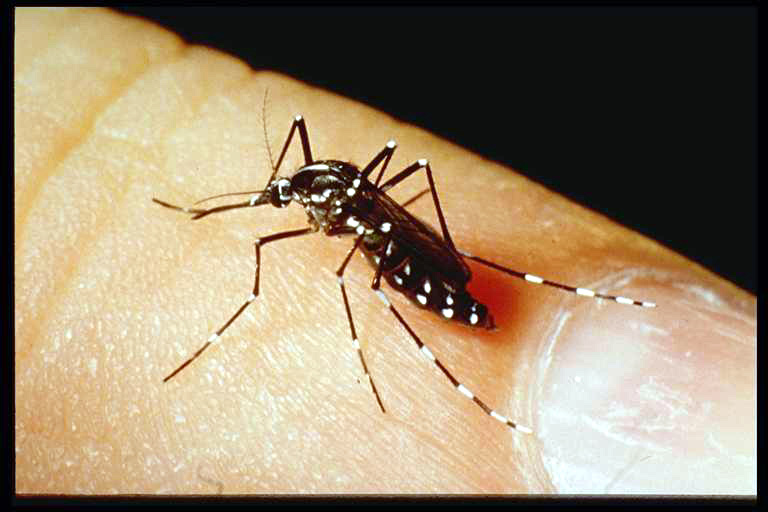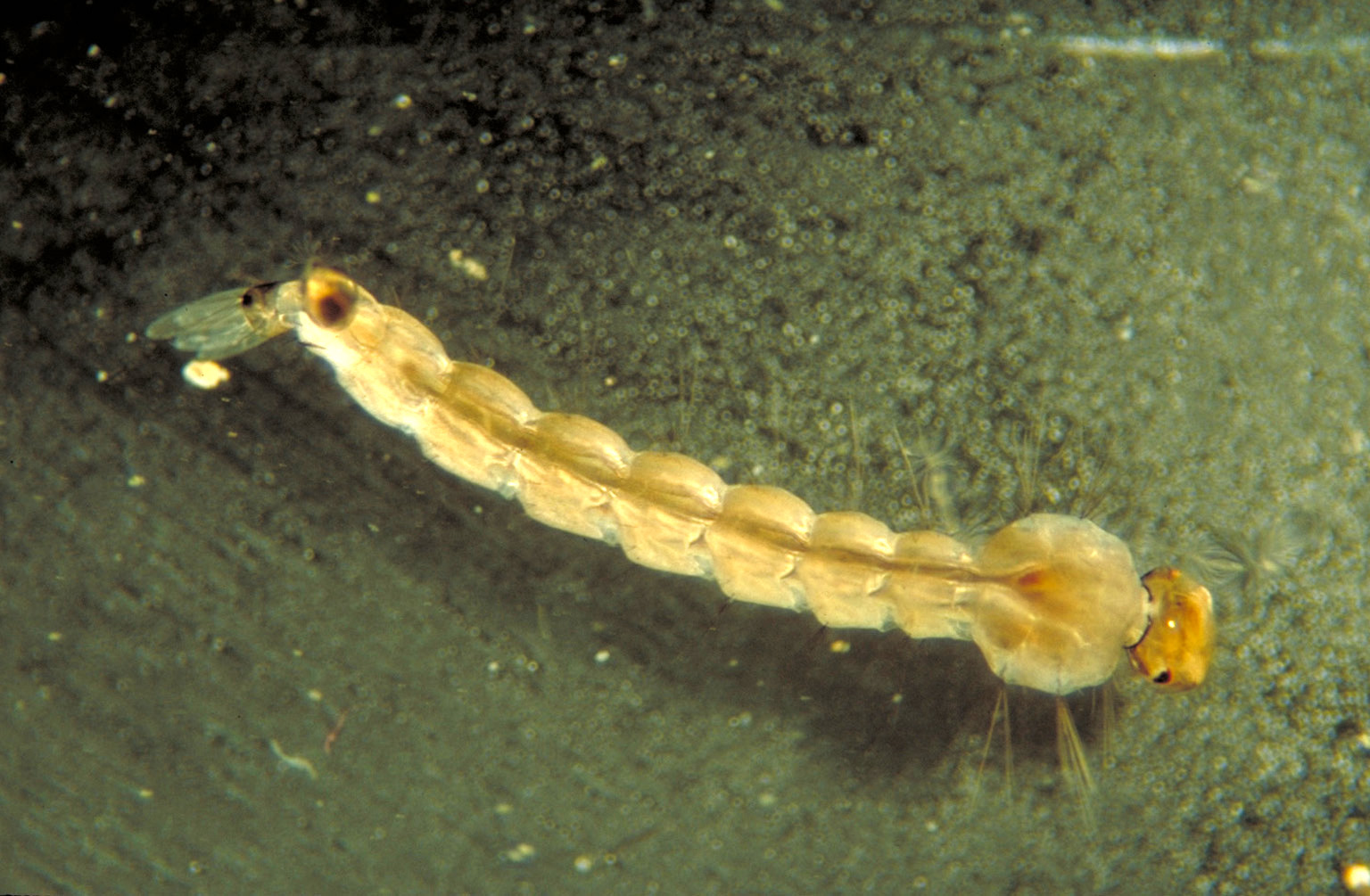
Asian tiger mosquito, Aedes albopictus (Skuse) (Diptera: Culicidae). Photo by Drees.
Common Name: Mosquito
Scientific Name: Varies
Order: Diptera
Description: Adults are about 1/4-inch long, with long legs, a pair of clear wings and a slender body. The body and wing veins are covered with scales. The head bears compound eyes, thread-like antennae and long, slender sucking mouthparts. Non-biting males can be distinguished from females because they bear very hairy “feathery” antennae they use as hearing structures to locate females. The Asian tiger mosquito, Aedes albopictus (Skuse), was first detected in Texas in 1985 and is now a wide-spread and common species. It is distinctly black with white markings on the body and legs. The thorax is marked with a single white stripe down the middle. In contrast, the thorax of the yellow fever mosquito, Aedes egypti (Linnaeus), has two curved (“lyre-shaped”) stripes. Aquatic larvae “swim” upside down, wriggling their segmented abdomen that bears “gills” and a breathing siphon at the end. The thorax and head are globular and each body segment bears tufts of hairs (setae). When at rest, they usually hang diagonally from the siphon tube which pierces the water surface tension to breathe, although some species (Anopheles) rest horizontally. Aquatic pupae are c-shaped with the top enlarged to contain the developing head, thorax, wings and legs. They can also “swim” by wriggling their abdomens, and at rest they “float” with their backs (which bear “trumpet”-like breathing structures) to the surface.

A mosquito, (Diptera: Culicidae), larva and pupa. Photo by Drees.
This family (Culicidae) also includes subfamilies of phantom midges (Chaoborinae) and dixa midges (Dixinae). A number of other midges and gnats are often mistaken for mosquitoes (see Crane Flies).
Life Cycle: Females of “standing water” mosquito species (Anopheles, Coquilettidia, Culiseta, Culex species) deposit masses of eggs in “rafts” on the water surface, while “floodwater” species (Aedes, Psorophora species) lay eggs either on plants on or below a still water surface or in moist soil depressions that will be subject to later flooding. Time for eggs to hatch varies with species from 16 to 24 hours to more than 2 years for floodwater mosquitoes. Larvae develop through 3 molts (4 instars) over a period of about one week before pupating. Adults emerge from the back of the pupa after 2 to 3 days. Adults live for 2 or more weeks, although standing water species overwinter as mated, engorged females.
Habitat and Food Source(s): Blood-feeding females have piercing-sucking mouthparts and usually must ingest a blood meal in order to develop eggs. Males, as well as females, sip nectar, honeydew and fruit juices. Larvae are filter feeders, consuming aquatic bacteria and other microorganisms. A few species have larvae that are predaceous on other mosquito larvae. Mosquito species vary in aquatic larval habitats, ranging from ponds, puddles, containers and tree holes to other sources of standing, slow moving, fresh or salty water. Large numbers of mosquitoes can develop in swamps, tidal marshes, flood water and rice fields. Male mosquitoes swarm in “clouds” to attract females. Mosquitoes can fly and disperse with the wind. Larvae and pupae can be detected by swirling a fine mesh net through standing water. Suction traps with light as the attractant are available to collect mosquitoes. Mosquitoes can also be attracted using carbon dioxide or dry ice.
Pest Status: Adult females bite and may transmit diseases (malaria, filariasis, arthropod-borne viruses such as yellow fever, denge and encephalitis. Saliva, injected by females while engorging on blood causes itching. There are about 55 species of mosquitoes in Texas (170 species nationally).
For additional information, contact your local Texas A&M AgriLife Extension Service agent or search for other state Extension offices.
Literature: Olson 1996; Ebeling 1978.